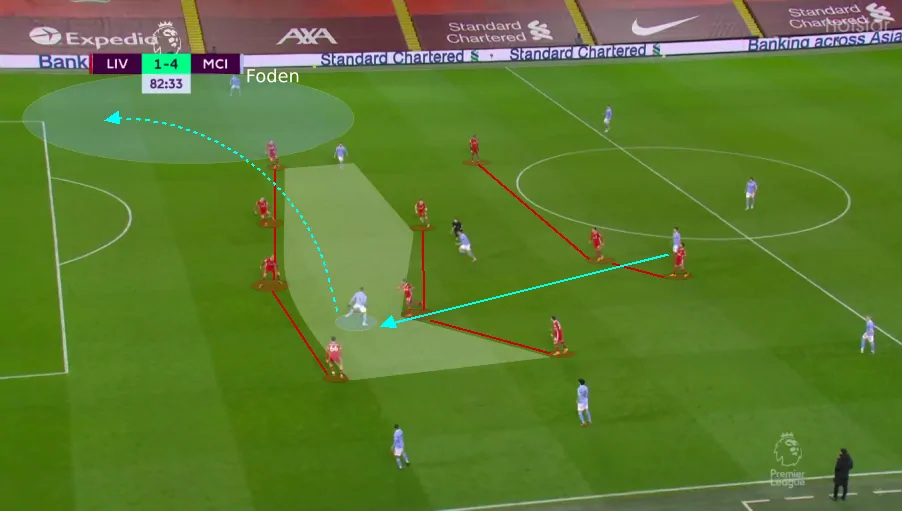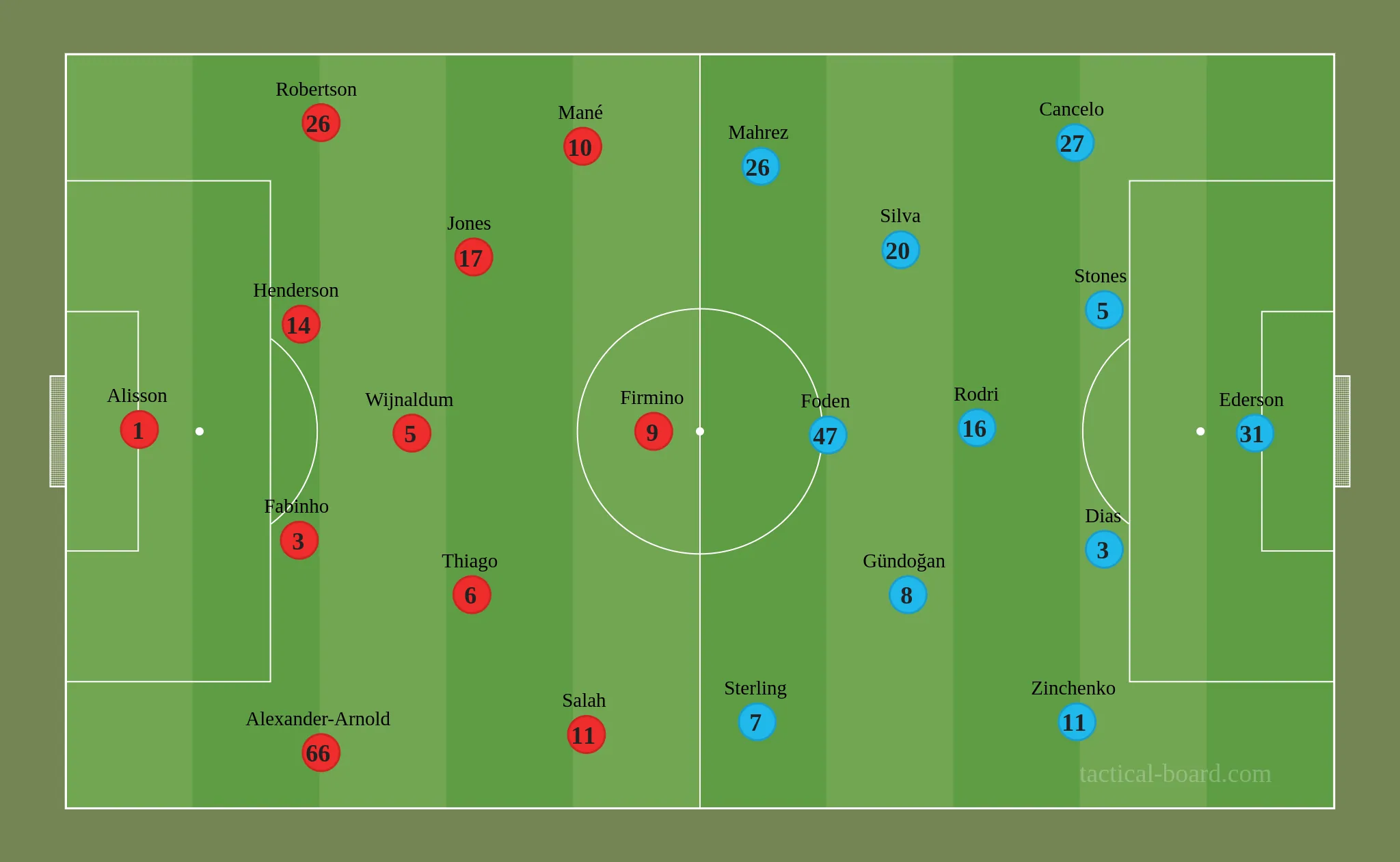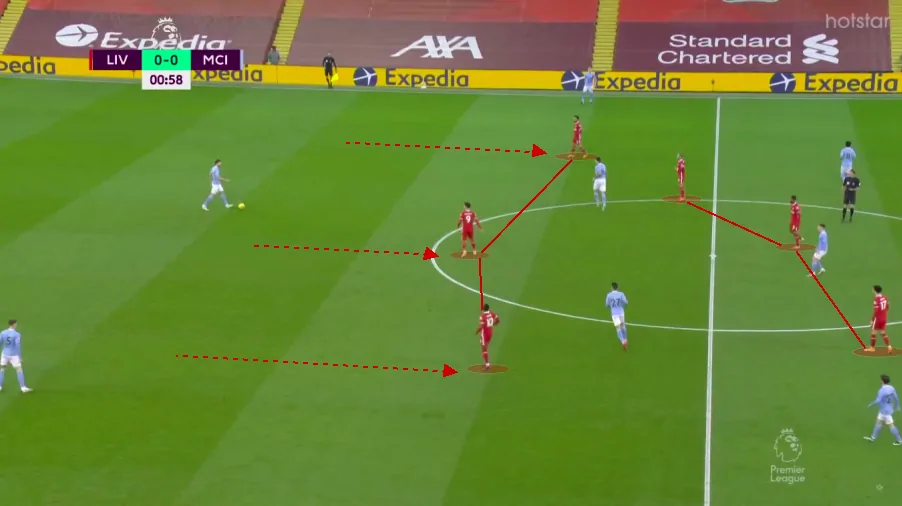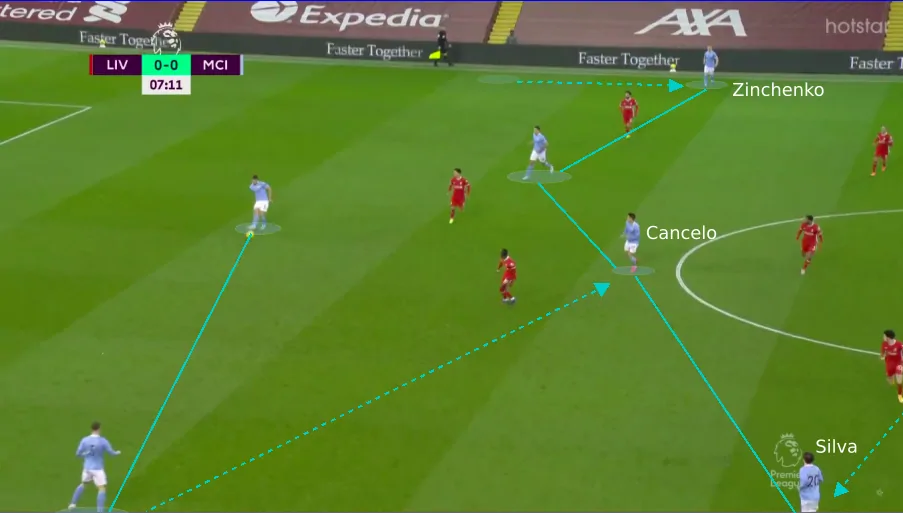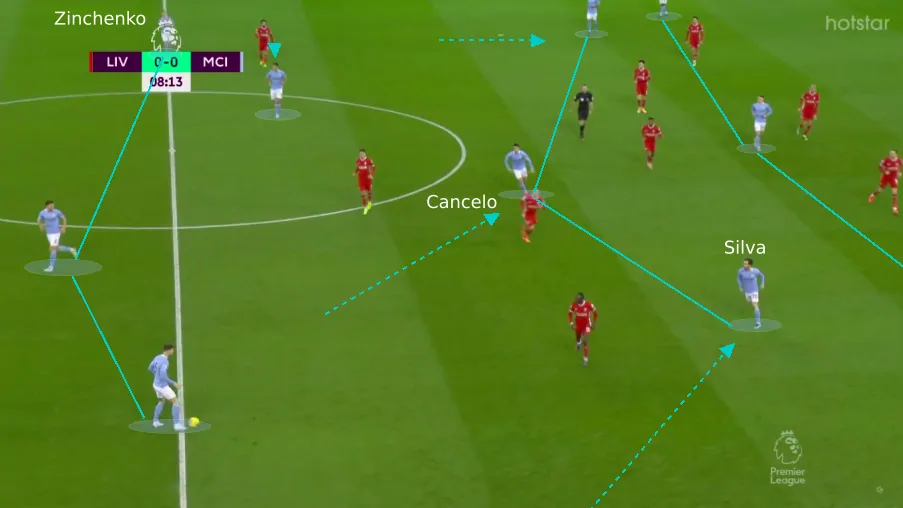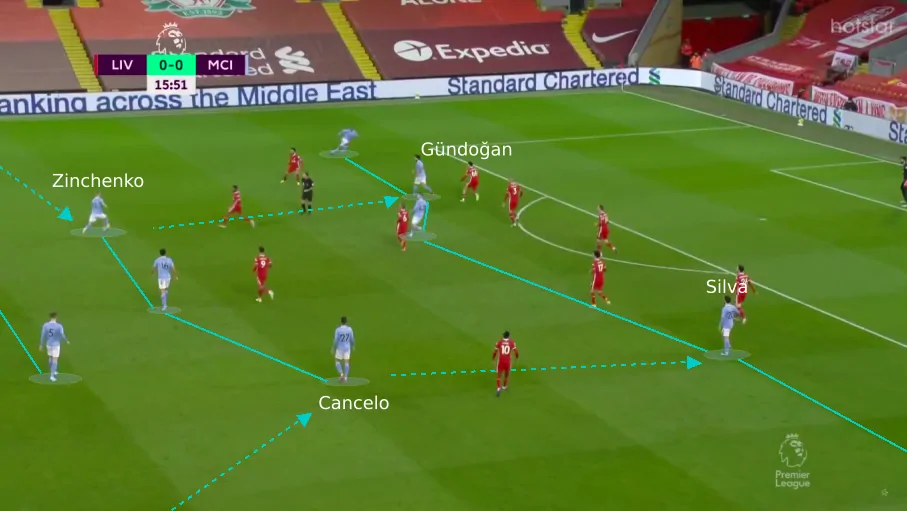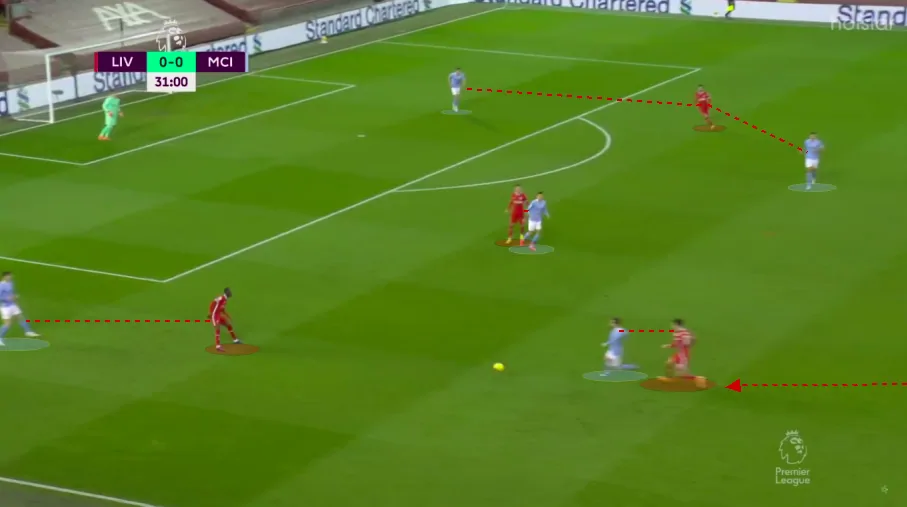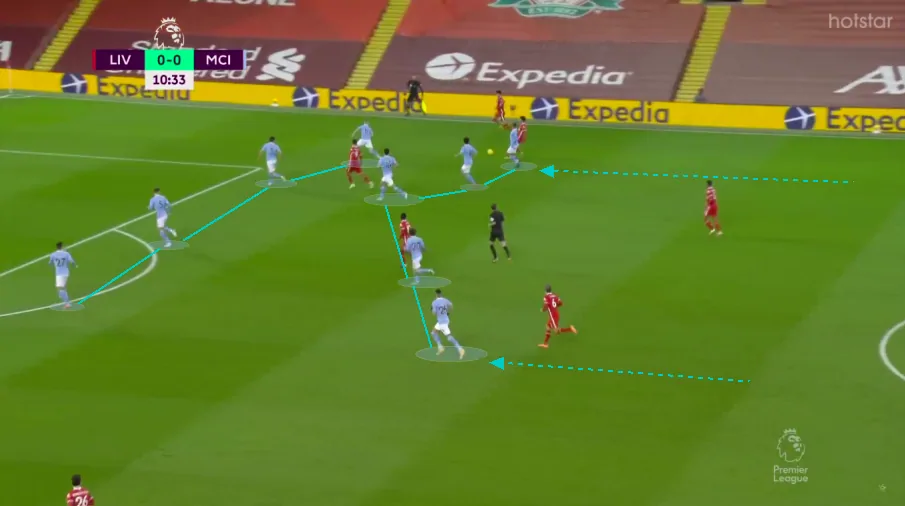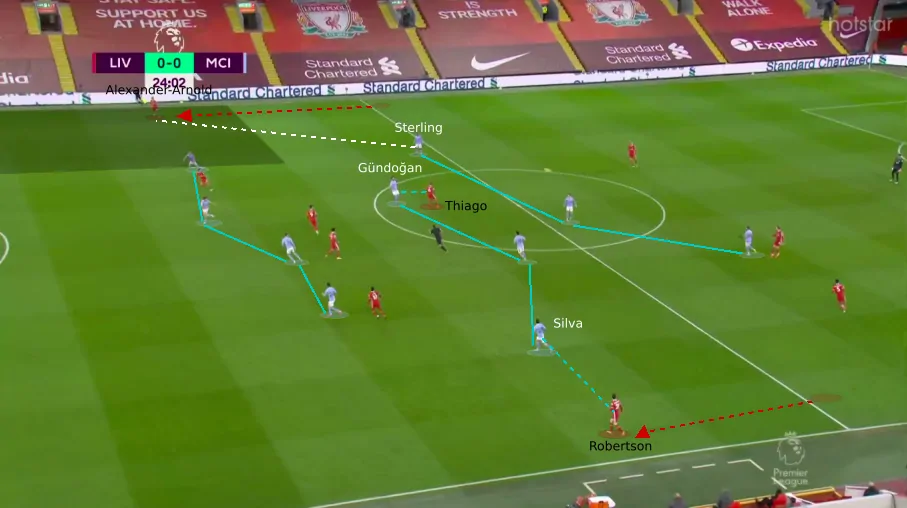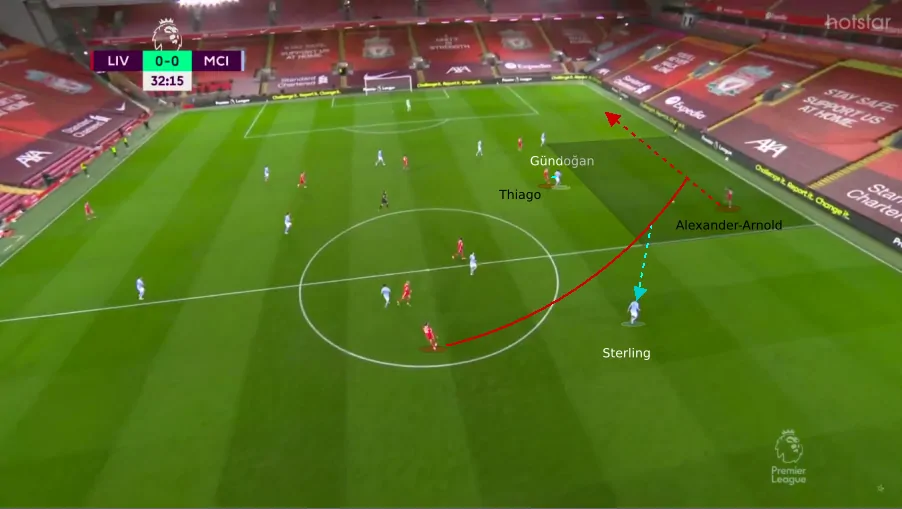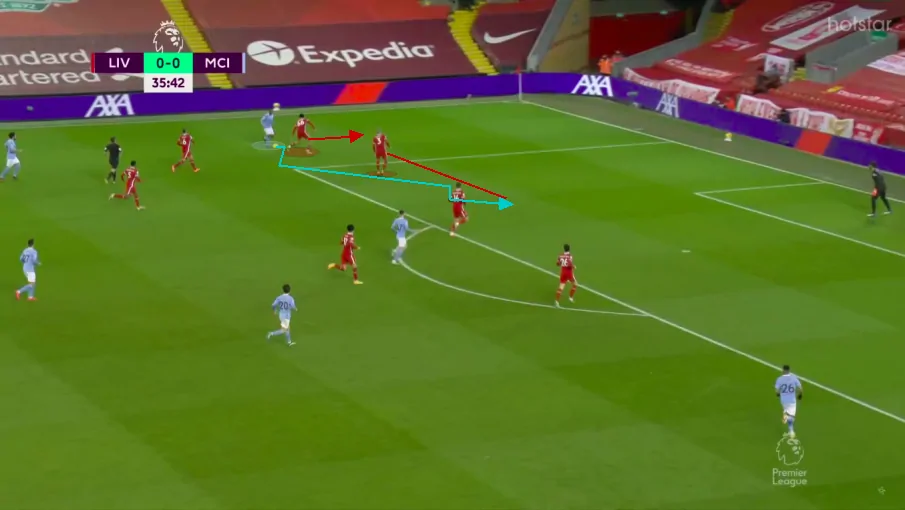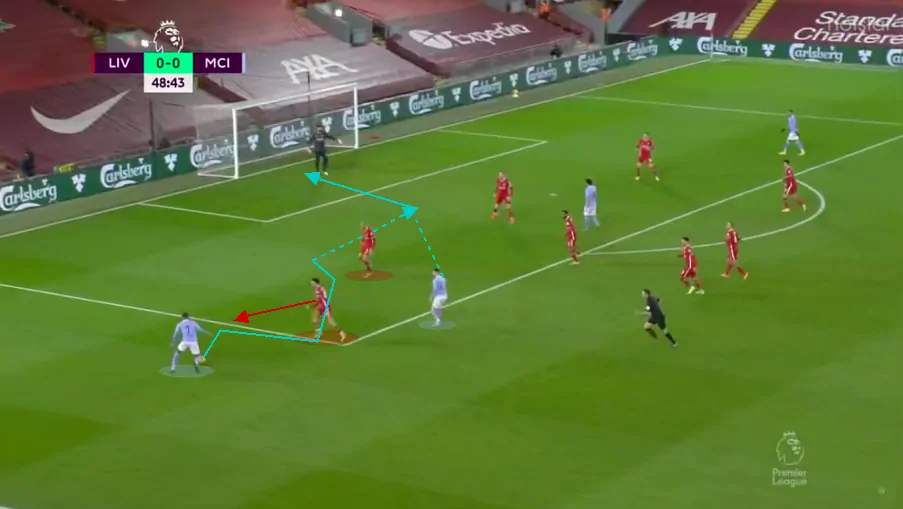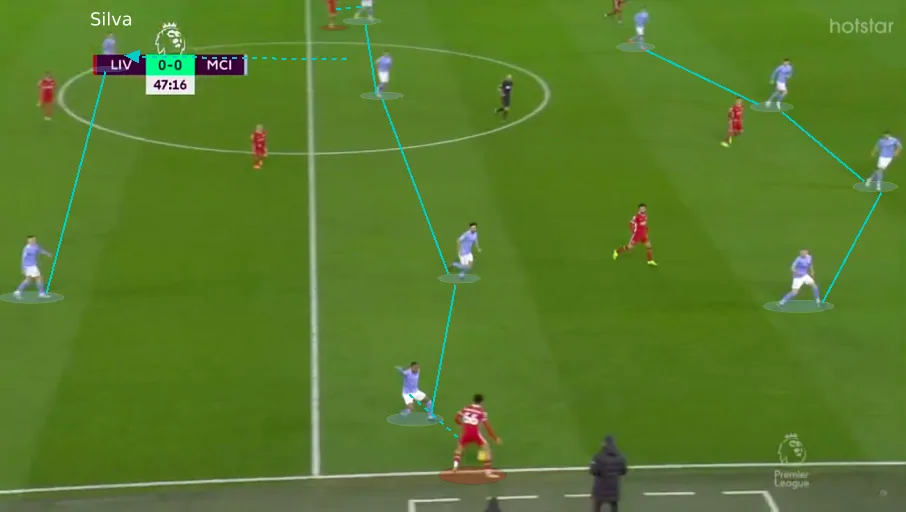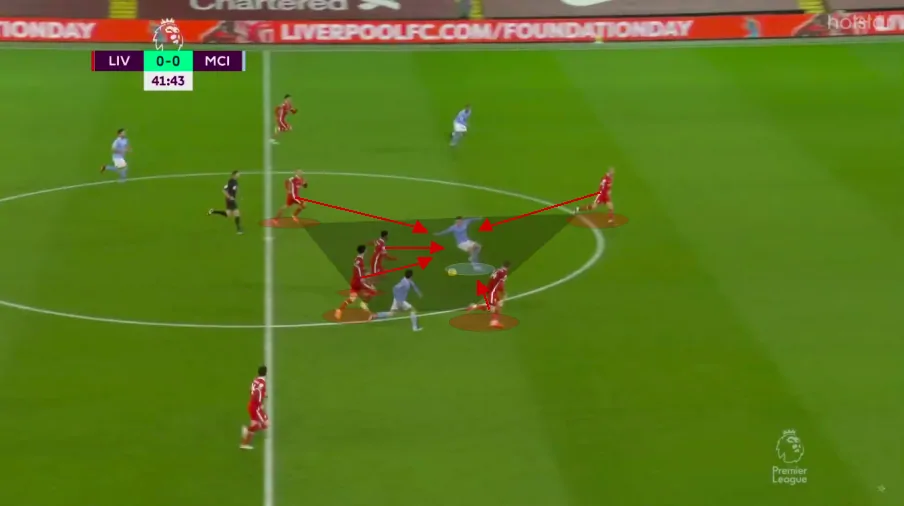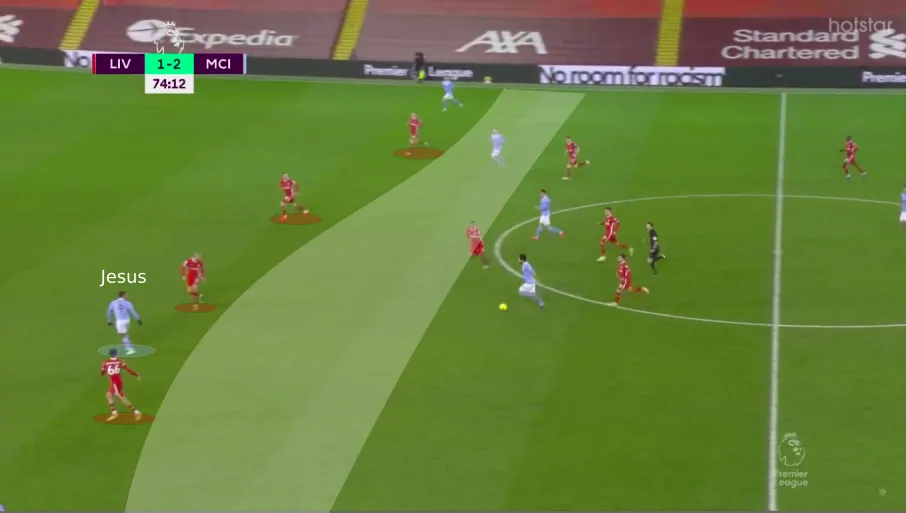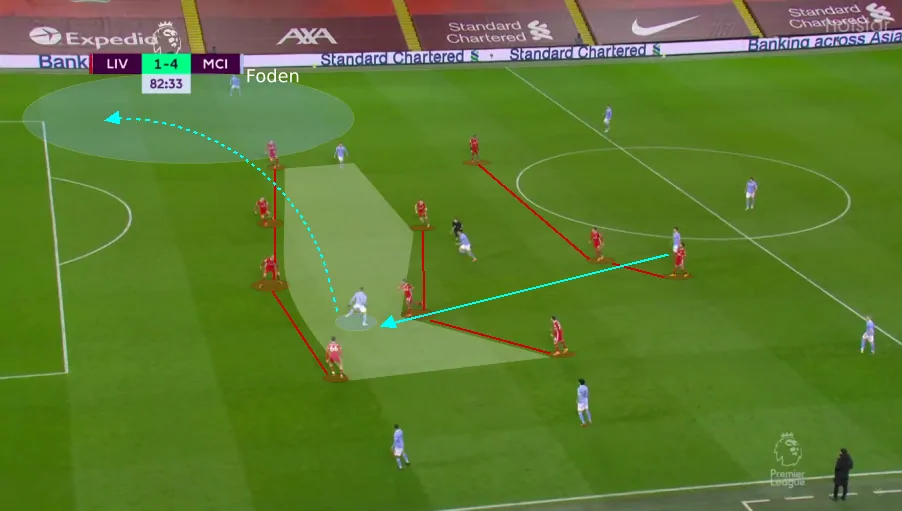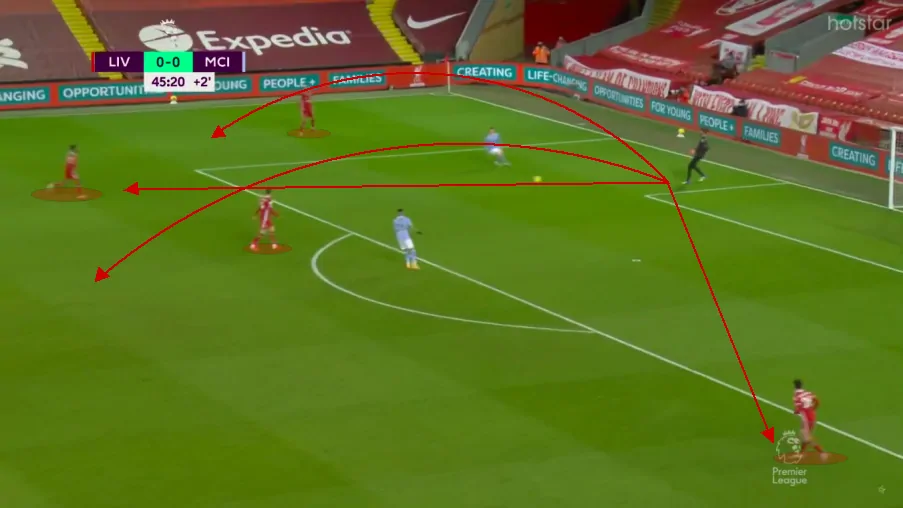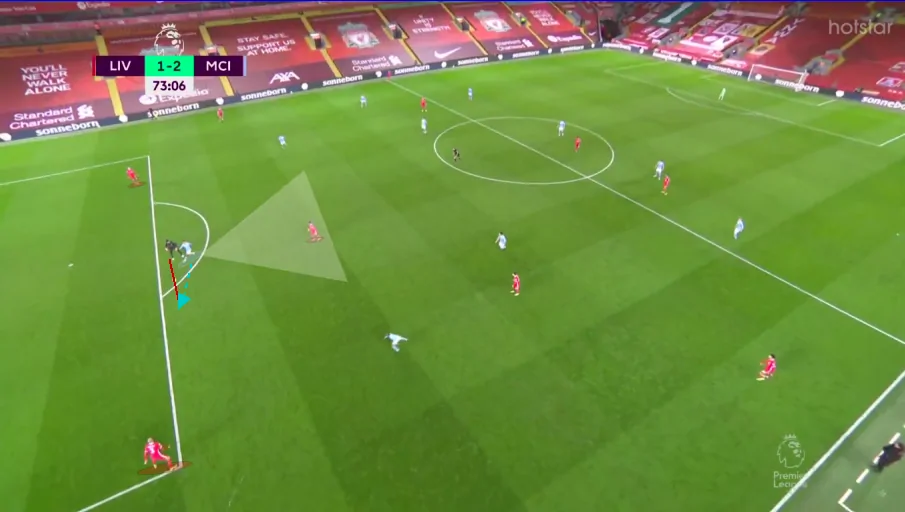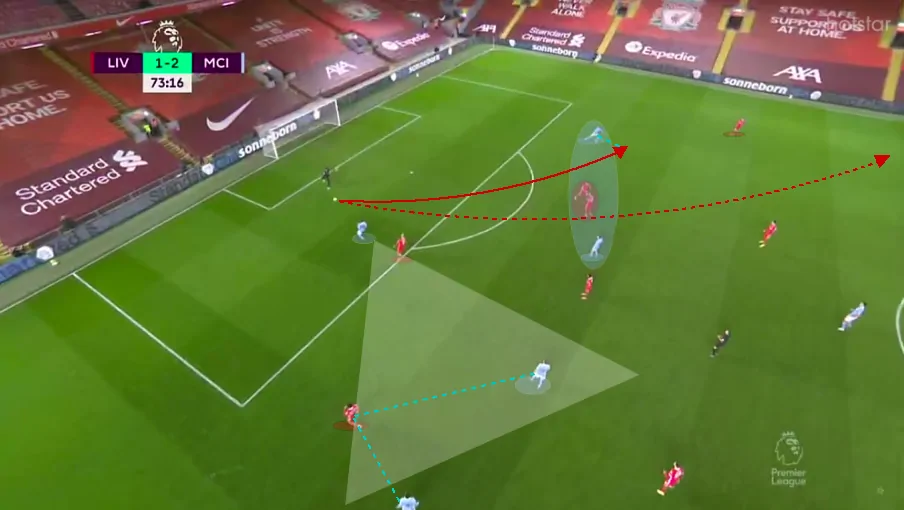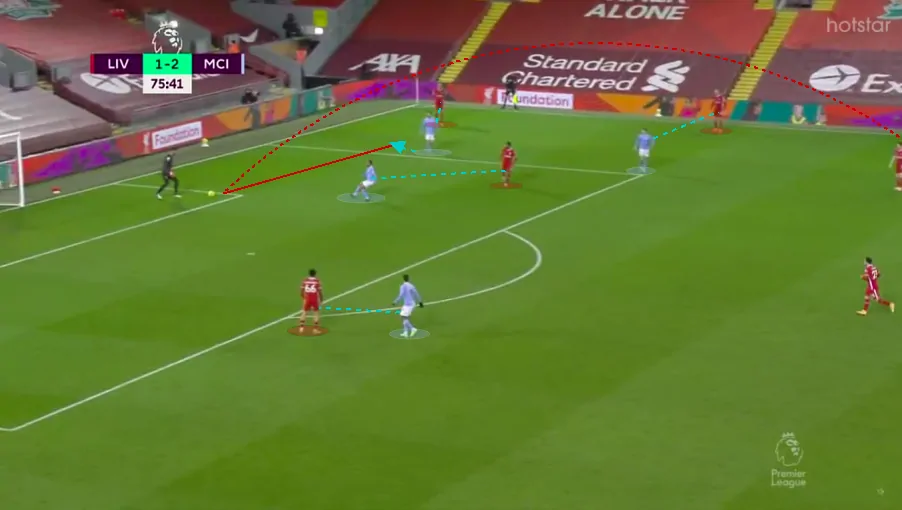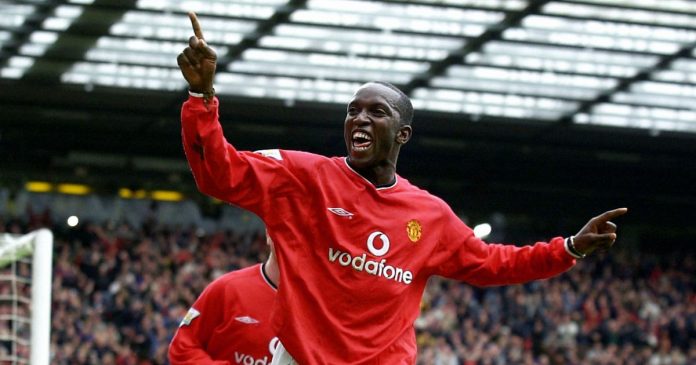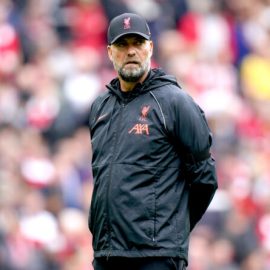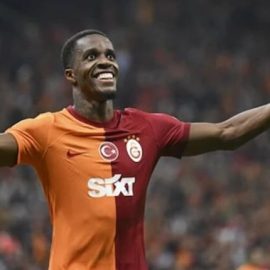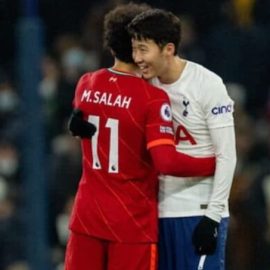It was that time of year again – it was time for the big one. Two of English football’s most rampant and successful teams in the last few years, who had formed an elite century-nearing or even – in the case of Manchester City in 2017/18 – century-completing duopoly.
This match was always a title-decider in the last few years, and it had the potential to be just that once again.
With the chasing pack stuttering and stumbling (Manchester United drawing late on to Everton and Leicester’s blank against Wolverhampton Wanderers), City were almost running away with the league, as they went into this match two points clear with two games in hand.
13 (non-penalty shootout) wins in a row in all competitions represented their best-ever winning streak, while over 450 minutes without conceding a league goal was the hallmark of a near-unbeatable defence.
Liverpool, seven points and a game behind the Cityzens, were among the stumblers. Following a seemingly-ominous 7-0 thrashing of Crystal Palace, they had only picked up nine points from a possible 24, falling far off the summit of the table. They needed to win here to stop City from almost certainly running away with it.
A great battle ensued, and after all sorts of action at both ends of the pitch, the Sky Blue side emerged thoroughly victorious. We will explore just how they did it in this analysis.
Line-ups
Liverpool lined up in a 4-3-3, but there were some interesting selections made. Alisson returned from illness to get back in between the sticks, with a back-four of Trent Alexander-Arnold, two midfielders in Jordan Henderson and Fabinho (who has just recovered from an injury), and Andrew Robertson in front of him.
Thiago Alcântara, Georginio Wijnaldum and interestingly, Curtis Jones made the midfield, while the familiar front-three of Mohamed Salah, Roberto Firmino and Sadio Mané reassembled as the Senegalese international made his first start in three games owing to a slight injury.
Our attempts to predict a Pep Guardiola curveball in our preview failed spectacularly, just as we expected. Ederson’s spot in goal along with João Cancelo, John Stones and Rúben Dias’ places in the defence were never in doubt, but the left-back role was a big question mark, and Oleksandr Zinchenko was Pep Guardiola’s answer.
Bernardo Silva, Rodri and İlkay Gündoğan were the midfield trio, with Riyad Mahrez and Raheem Sterling on either side of a false-nine in Phil Foden, meaning that Gabriel Jesus was only on the bench.
City’s build-up and Liverpool’s press in the first-half
The match got off to a relatively slow start, as almost all big-six matches have this season. Here is why:
Liverpool started the match off by not applying so much of a press in the initial stages. Instead, they held their 4-3-3 shape, as you can see above.
In their own defensive third, City built up with a 2-4, as Zinchenko moved a bit further on the left and Silva hugged the touchline on the right, with Cancelo moving alongside Rodri in holding midfield.
As City entered the progression phase, they transitioned into their well-known 3-1-3-3 with Zinchenko staying with the two centre-backs while Cancelo pushed forward and had Silva and Gündoğan on either side in midfield. Of those three, the German usually pushed furthest forward.
At times, even Zinchenko stepped into midfield in an inverted full-back role, freeing up Gündogan and Silva to join the forward line in a 2-3-5.
Around the half-hour mark, Liverpool started pressing with more intensity. They did not let City have the ball with any comfort, as one of the wingers (Mané in this case) pressed the corresponding centre-back (Stones) in possession.
At the same time, one of the midfielders (Jones) stepped forward to prevent the in-possession full-back (Silva, as previously discussed) from receiving and turning. Meanwhile, Firmino marked the closer one of the two holding midfielders (Cancelo, once again aforementioned), while the other winger (Salah) kept tabs on the remaining defender (Dias) and midfielder (Rodri).
Just before the time when Liverpool ramped up their press, they also started to use the ball a lot better in way of attack.
The battle on the wing
Liverpool’s flying full-backs have been fairly subdued so far this season, but there was a period in this match when they regained a bit of their old freedom.
City tried to defend in their own third with strong numbers, as the wingers joined the midfield line to create a 4-5-1.
However, with the ball in the opposition half, City tried to stop Liverpool in a 4-3-3. This meant that their full-backs could get forward with less opposition. On the Reds’ left, Robertson was usually tracked by Silva, the man on the right of City’s midfield.
But on home side’s right, Alexander-Arnold was free since Gündoğan focused on keeping Thiago in check. This meant that Sterling would have to try and track him, but he was usually too far forward to succeed.
To reiterate – with Silva tracking Robertson, Manchester City even defended in a 5-4-1 at times as the Portuguese international morphed into a right wing-back, but there was no one doing anything similar on the opposite flank, and that is where City had problems.
Naturally, Liverpool looked to exploit this. They would first draw City’s wingers forward by passing around at the halfway line, before springing a through ball to Alexander-Arnold (usually from Henderson) by exploiting the big gap between Sterling and Gündoğan. Thanks to this freedom, the English full-back was able to deliver a couple of accurate crosses – more than any other player on the pitch.
However, it was not all one-way traffic on the flank.
The best moment of the first half came from Alexander-Arnold’s side of the pitch, but it was not for Liverpool. Sterling, who had a field day dribbling at the defensively weak full-back, beat both him and the usually-solid Fabinho with a zig-zagging run, which ended when the Brazilian international brought him down for a penalty.
The opening goal was also created by Sterling running at Alexander-Arnold. He beat the full-back again (on his way to completing five take-ons – more than any other player on the pitch), this time choosing to set up Foden, whose saved shot was rebounded in by Gündoğan.
Although things were working in attack, Pep Guardiola knew that he would have to make a couple of defensive tweaks to arrest the advances of Liverpool’s full-backs.
City’s second-half changes
Truthfully, the match was won at half-time, when Guardiola made a decisive change in his side’s defensive formation. Here is what he did:
Now, City started defending in a 4-4-2. Silva, instead of tracking Robertson, now pushed forward alongside Jesus, while Mahrez worried about the Scottish full-back and Sterling managed to get a lot closer to Alexander-Arnold.
Then, Guardiola brought Mahrez off for Gabriel Jesus.
Foden evidently was not having fun in a central role. The young Englishman saw very little of the ball in the first half, and when he did, it was usually in very tight areas with a number of opposition defenders around him, which should explain why he had the second-most unsuccessful touches in his team.
With Jesus coming on, City’s defensive shape did not change, but a key aspect of their possession-play did. Unlike a false-nine, Jesus did not drop away from the Liverpool defence and played on the last man’s shoulder instead – stretching it backwards and creating more space in between the lines.
He often dropped inside the space after creating it himself, just as he did to assist Foden’ goal. You can see Jesus receiving the ball in between the lines here, after which he sent a pass across to Foden, who, for once, had some grass to run onto, and he made the most of it.
These small changes proved to be the telling difference in the match, as they stopped Liverpool from advancing too easily and provided a base for City to build on.
Alisson’s nightmare
Alisson’s poor performance in goal was not a particularly tactical chapter in this match, but given the implications it had on the result, it is certainly worth having a look at.
In most cases when a backpass was played to Alisson, the keeper was afforded at least four passing options, as you can see above.
However, during the chaos that ensued prior to City’s second, Alisson only had a couple of options available, but he too messed up with a terribly loose pass.
He got away with that one though, and when the ball came to him once again, he had a couple of other options (who were clustered) but they were surrounded by City shirts, so he decided to go a bit longer. However, the goalkeeper got his kick wrong, and that is what he was made to pay for.
His second mistake, though, is simply inexplicable. Clearly, there is no pass available in this situation, and Alisson should simply try and punt the ball as far up the pitch as possible, but he still tried to find Fabinho and failed spectacularly.
As expected, fans are slaughtering Alisson for his horrendous mistakes, but it must be remembered that the Brazilian international missed the last match due to an illness, and might not have been fully fit here. But, of course, that does not change the fact that his mistakes cost his side the match.
Conclusion
Once again, Guardiola changed a seemingly-functional system for a big game (by opting for inverted wingers), and it did not work quite as well as he would have wanted it to initially.
However, this time, the Spanish tactician got his half-time tweaks spot on, completely changing the dynamic of the match and winning the three points for his side.
At the same time, it must be noted that without certain individual errors, this match might have gone in a very different direction. But, at the end of the day, City emerged victorious, and are now five points clear at the top of the table with a game in hand.
Liverpool are now 10 points behind them, and their main priority should be to simply qualify for the Champions League given the tightness at the top of the Premier League.
It’s City’s to lose now and considering their 2021 form they probably will run away with it.
Stats courtesy Whoscored.
Add Sportslens to your Google News Feed!
